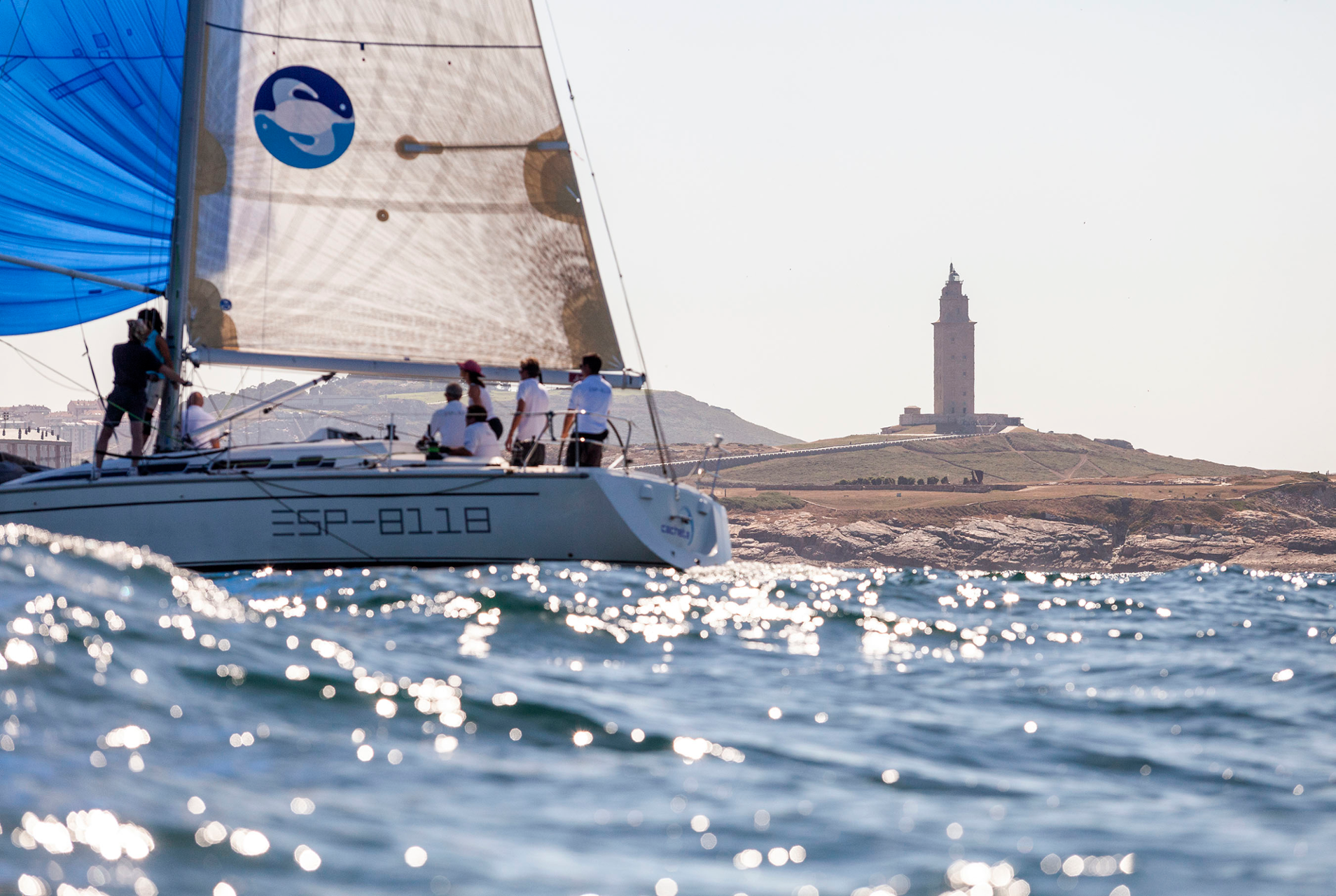- Home
- What to do in A Coruña
- The English Way
- Curiosities
The Way by sea

Since the 13th century, many people have chosen to make the pilgrimage by sea. The majority of those who set sail came from England, giving the route its name: the English Way, the only Way of Saint James in Europe by sea.
Tradition also links the apostle to the sea routes. The disciples of Saint James the Great brought his body in a ship to bury him in Galicia, considered by the Romans to be the end of the world.
The link between the sea and the Way of Saint James extends to the very symbol of the pilgrimage, the scallop shell, which protects and welcomes pilgrims. This image can also be seen in the coat of arms of A Coruña, in which seven scallops surround the Tower of Hercules.

The Church of Santiago and the Church of San Jorge
Once in harbour, pilgrims' first stop was the Church of Santiago Apóstol, located next to the Parrote. This is the oldest church in the city, built in the 12th century for the pilgrimage to Santiago de Compostela by order of King Alfonso IX. There, the pilgrims embraced the image of the apostle, relieved to reach the mainland.
However, in medieval times many of the English pilgrims chose to start their route in the Church of San Jorge, which was located in the space now occupied by the Teatro Rosalía. The reason was that St George is the patron saint of England.
From pilgrims to enemies

In the 16th century, the good relations between the Galicians and the English changed after the British privateer Sir Francis Drake attacked the city.
The battle that ensued led to the loss of emblematic buildings such as the convents and churches of San Francisco and Santo Domingo, which were stops on the pilgrimage route. The resistance of A Coruña, which defeated Drake, served to protect Santiago de Compostela and its cathedral.
An unprecedented symbol of the Way of Saint James
Another of the buildings lost in Drake's attack was the Pilgrims' Hospital of San Andrés. The Church of San Andrés was built on its ruins, and its exterior has a stone cross that hides a Jacobean treasure. Reliefs on the lower part depict five walking sticks or staffs, which are usually shown together with pilgrims, but here they appear alone.
The other names of A Coruña
Pilgrims from different countries used to arrive at the port of A Coruña, with their corresponding names for our city. A Coruña was known as Pharum, Phare or Far, referring to the lighthouse, before the Tower of Hercules took its name from the legend.
In medieval times it was also common to see variations of A Coruña, such as: La Coulongne, La Crunhe, La Groyne, La Grune, Clunya, Crunna, Corunna, Coromha, Corund, Lagrunje, Grwne, Grunn, Kron, Kronen, etc. One of the most striking place names is Finster Stern "Dark or Dark Star", used by the Germans to refer to Fisterra, the land of the last light.




